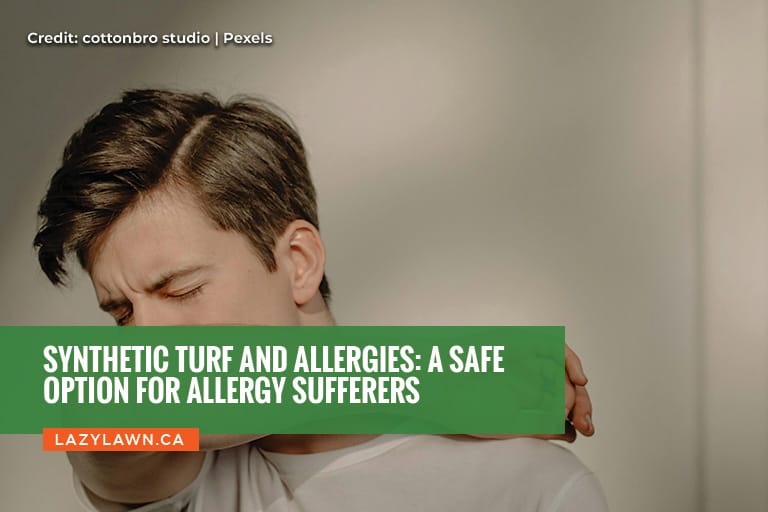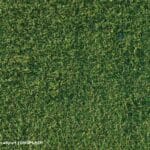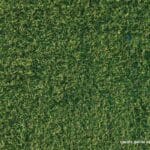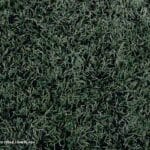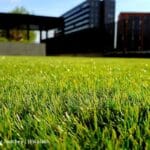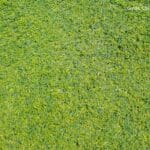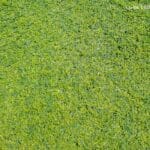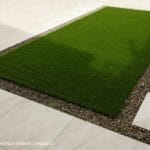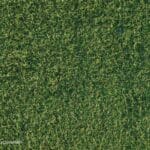Allergy sufferers often find it difficult to enjoy outdoor spaces due to the various allergens present in natural grass, such as pollen, mould, and dust. For these individuals, synthetic turf offers a potential solution. This alternative to natural grass can significantly reduce exposure to allergens, allowing allergy sufferers to enjoy outdoor environments more comfortably. Let’s dive into how synthetic turf can be a safer option for allergy sufferers and the reasons behind its growing popularity as an allergen-free alternative.
Natural Grass and Common Allergens
Before discussing synthetic turf, it’s important to understand the allergy triggers associated with natural grass. One of the most common allergens is pollen, produced by many types of grasses during their growth and reproduction cycles. Pollen grains are small, lightweight, and easily airborne, making them a major trigger for hay fever and other respiratory allergies. For individuals who are sensitive to pollen, exposure can lead to symptoms like sneezing, itching, watery eyes, and even difficulty breathing.
In addition to pollen, natural grass often harbours mould, which thrives in moist environments. Mould spores are another common allergen, and like pollen, they can be inhaled, leading to allergic reactions. Grass also attracts dust mites, which can live in soil and organic debris. Dust mites are tiny creatures that feed on dead skin cells and are a well-known trigger for allergic reactions.
For those sensitive to any of these allergens, spending time on or near natural grass can be uncomfortable and problematic. Synthetic turf, by contrast, is designed to minimise exposure to these allergens, providing a safer outdoor option.
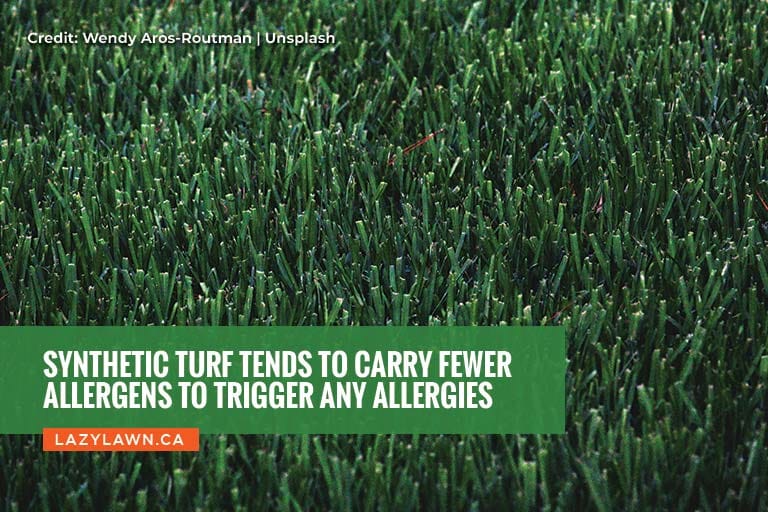
Why Synthetic Turf is a Safe Alternative
Synthetic turf, also known as artificial grass, is made from a combination of synthetic fibres that resemble the look and feel of natural grass. Unlike real grass, synthetic turf doesn’t produce pollen, nor does it support the growth of mould or harbour dust mites to the same degree. This absence of allergens makes it a much safer option for individuals who suffer from allergies.
No Pollen Production
Since synthetic turf is made from artificial materials, it doesn’t undergo the natural reproductive processes that produce pollen. This eliminates one of the primary allergens present in natural grass. Allergy sufferers who are sensitive to pollen can enjoy outdoor spaces without worrying about triggering their symptoms.
Reduced Mould Growth
Synthetic turf is designed with drainage in mind, allowing water to flow through the material and prevent moisture buildup. Since mould requires moisture to grow, the well-drained surface of synthetic turf is far less likely to support mould growth than natural grass. As a result, individuals who are allergic to mould spores can feel more at ease on synthetic turf, knowing that the risk of mould exposure is much lower.
Less Dust and Debris
Natural grass can accumulate organic debris, which in turn attracts dust mites. Synthetic turf, however, is much easier to keep clean. Regular maintenance, such as brushing and rinsing, can prevent dust and dirt from building up. Without the organic debris that dust mites rely on, the likelihood of encountering these allergens is significantly reduced.
Pet Allergies and Synthetic Turf
In addition to reducing exposure to common grass allergens like pollen and mould, synthetic turf can also be beneficial for those with pet allergies. Many people are allergic to proteins found in pet dander, which can be transferred to grass when pets spend time outdoors. When animals play on natural grass, they may leave behind fur, dander, and even urine, all of which can trigger allergic reactions in susceptible individuals.
With synthetic turf, it’s easier to clean up after pets. Pet waste can be quickly removed, and the turf can be rinsed to remove any residual allergens. Unlike natural grass, synthetic turf doesn’t absorb pet urine, meaning it won’t harbour the same level of allergens. This makes synthetic turf a more hygienic option for households with pets, particularly for individuals who are allergic to animals.
Seasonal Allergies and Synthetic Turf
Seasonal allergies, particularly those triggered by grass pollen, can make certain times of the year unbearable for allergy sufferers. Spring and summer are often the worst months, as this is when grass is actively growing and releasing pollen into the air. People who are sensitive to these allergens may find themselves avoiding outdoor activities during these seasons, limiting their ability to enjoy outdoor spaces.
One of the greatest advantages of synthetic turf is that it remains allergen-free throughout the year. Whether it’s spring, summer, or fall, synthetic turf doesn’t go through the same growth cycles as natural grass. This means that even during peak pollen seasons, individuals with allergies can enjoy the outdoors without fear of exposure. The consistency and reliability of synthetic turf provide a safe and allergy-friendly alternative year-round.
Benefits for Children with Allergies
Children who suffer from allergies are often particularly sensitive to outdoor allergens. Pollen, dust, and mould can easily trigger allergic reactions in children, making it difficult for them to play on natural grass without discomfort. For parents of children with allergies, finding a safe outdoor space can be a challenge.
Synthetic turf offers a solution by creating an allergen-free environment where children can play without worry. The turf is soft and cushioned, making it safe for play, and since it doesn’t produce pollen or support the growth of mould, children are less likely to experience allergy symptoms. In this way, synthetic turf can help children with allergies enjoy more time outdoors and engage in physical activities without the risk of exposure to allergens.
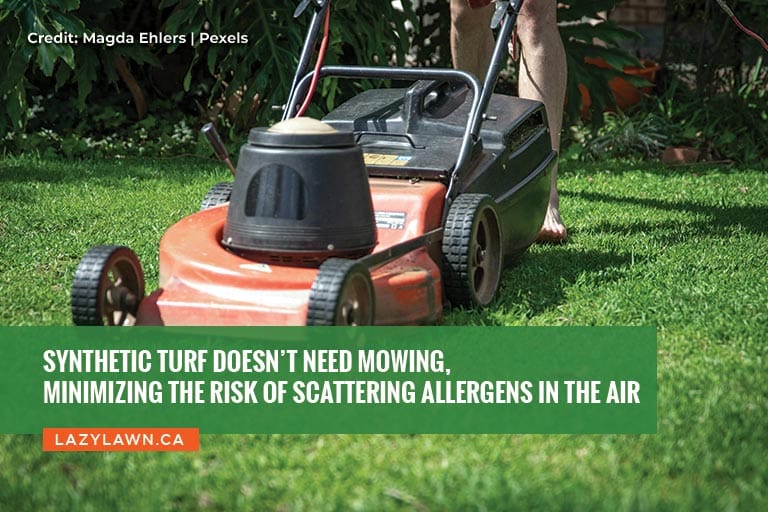
Low Maintenance and Allergen Control
One of the additional benefits of synthetic turf is that it requires far less maintenance than natural grass. Regular mowing, fertilising, and watering are necessary to keep natural grass healthy, but these activities can also contribute to the spread of allergens. Mowing grass, for instance, can release pollen into the air, increasing exposure to those nearby.
Synthetic turf eliminates the need for mowing and fertilising, which in turn reduces the potential for allergen exposure. Regular maintenance of synthetic turf primarily involves brushing and rinsing, both of which help keep the surface clean and free of dust and debris. This ease of maintenance not only saves time and effort but also helps keep the outdoor environment allergen-free, making it a safer option for allergy sufferers.
For individuals who suffer from allergies, synthetic turf offers a safe and practical alternative to natural grass. By eliminating common allergens, synthetic turf allows allergy sufferers to enjoy outdoor spaces without discomfort. Wherever you install it or what you intend it for, synthetic turf provides an allergen-free environment that can be enjoyed year-round. Its low maintenance and ability to create a clean, hygienic surface make it an ideal option for households with allergy sufferers, offering them a chance to use their outdoor living spaces without worry.
When it comes to quality synthetic turf, look no further than Lazy Lawn. We provide a wide range of artificial grass options to match your aesthetic preferences and to help boost your home’s curb appeal. Our turf is allergen-free and cost-effective, to ensure you get appealing grass for your home spaces without breaking the bank. Give us a call now at (888) 622-5296 for quality artificial turf that looks and feels just like natural grass.

